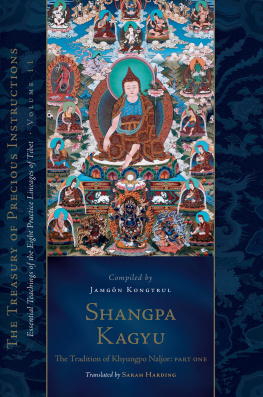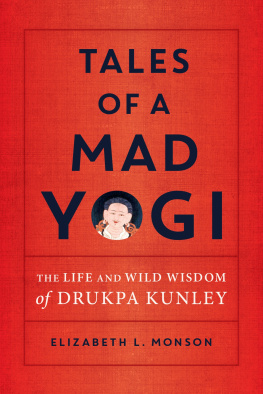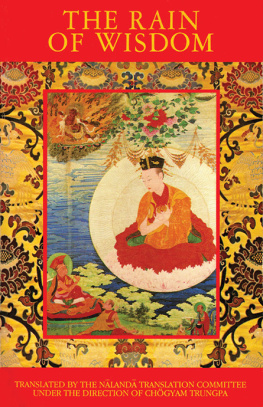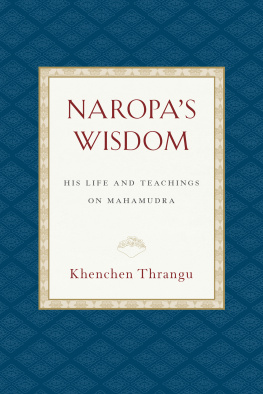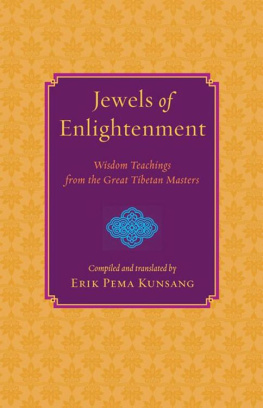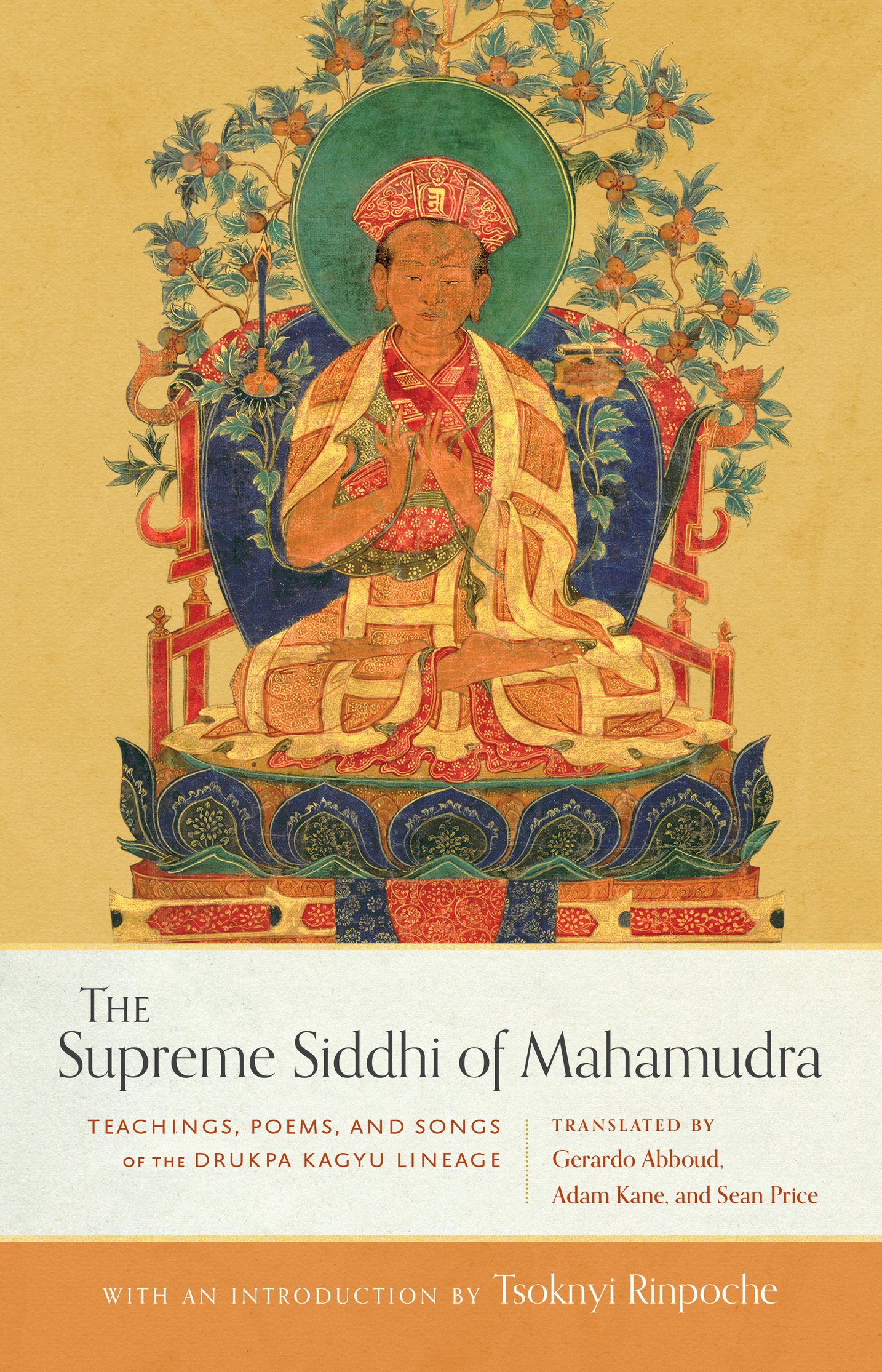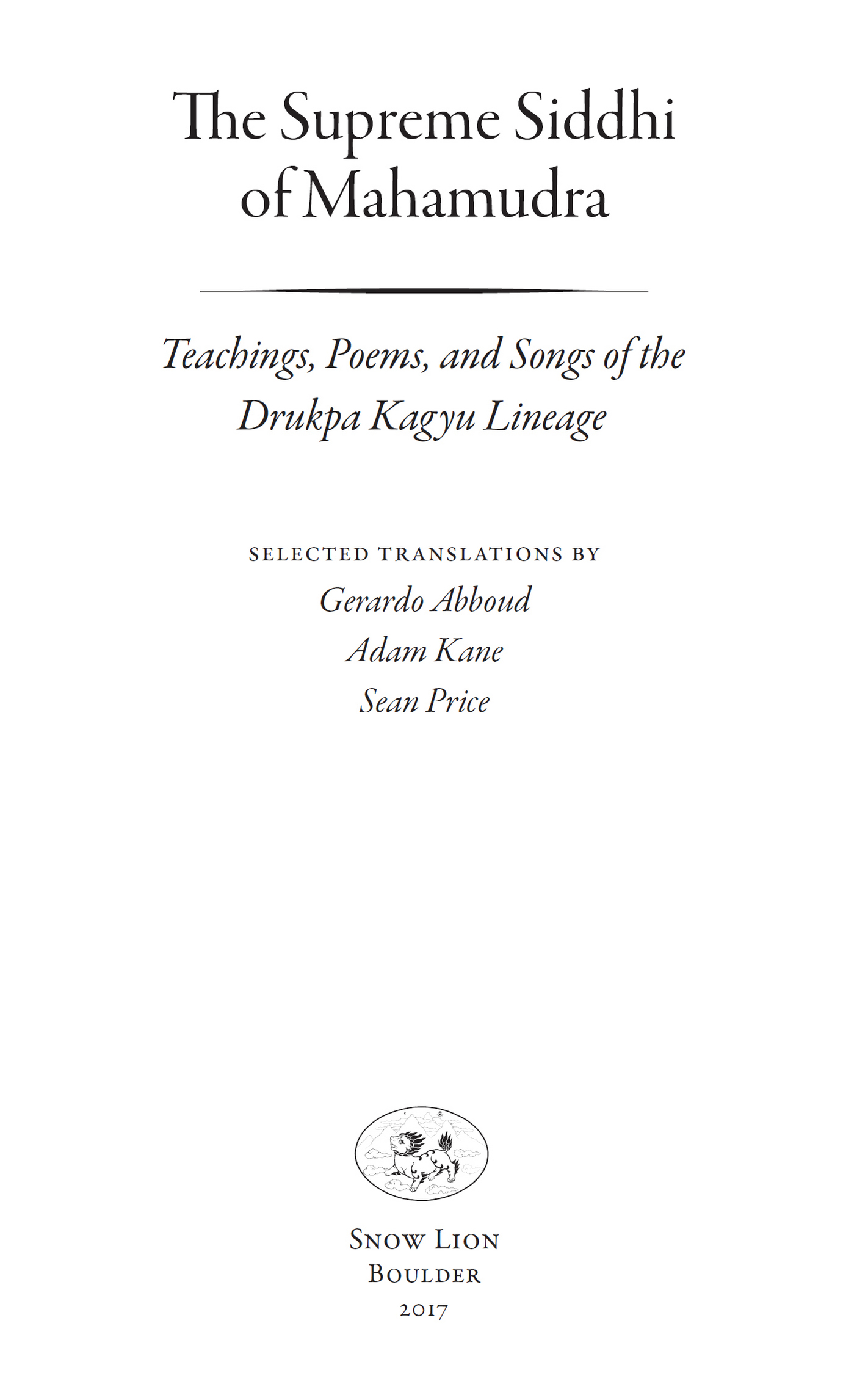Contents
Snow Lion
An imprint of Shambhala Publications, Inc.
4720 Walnut Street
Boulder, Colorado 80301
www.shambhala.com
2017 by Gerardo Abboud, Adam Kane, and Sean Price
Illustrations 2017 by Chris Banigan
All rights reserved. No part of this book may be reproduced in any form or by any means, electronic or mechanical, including photocopying, recording, or by any information storage and retrieval system, without permission in writing from the publisher.
Cover art: Pema Karpo (15271592); Tibet, late 16th/early 17th century; pigment on cloth Rubin Museum of Art, gift of Shelley and Donald Rubin. c2006.66.250 (HAR 362)
Cover design: Gopa & Ted2, Inc.
L IBRARY OF C ONGRESS C ATALOGING-IN -P UBLICATION D ATA
Names: Abboud, Gerardo, translator. | Kane, Adam, 1978 translator. | Price, Sean, 1968 translator. | Tsoknyi Rinpoche, writer of introduction.
Title: The supreme siddhi of Mahamudra: teachings, poems, and songs of the Drukpa Kagyu lineage / selected translations by Gerardo Abboud, Adam Kane, and Sean Price; foreword by Tsoknyi Rinpoche.
Description: First edition. | Boulder: Snow Lion, 2017. | Includes bibliographical references. Identifiers: LCCN 2017009904 | ISBN 9781559394680 (hardback)
eISBN9780834840959
Subjects: LCSH: Brug-pa (Sect) | BISAC: RELIGION / Buddhism / Sacred Writings. | RELIGION / Buddhism / History. | RELIGION / Buddhism / Tibetan.
Classification: LCC BQ7683 .S87 2017 | DDC 294.3/923dc23
LC record available at https://lccn.loc.gov/2017009904
v5.1
a
T RANSLATORS I NTRODUCTION
Not all those with squinting warm-looking eyes are called bodhisattvas
To spout hundreds of words is not what is meant by explanation
To translate colloquial language into Tibetan is not what is called a translation
From The Song of Not All by Drukpa Kunleg
This collection of translations captures a rich cross section of Mahamudra, the practice of the sublime essential nature, from the Drukpa Kagyu lineage of Tibetan Buddhism. The Drukpa branch of Kagyu is perhaps best known for its yogic masters living in remote mountain retreats and its wandering enlightened madmen. They often taught in direct and piercing waysspontaneously expressing their love, devotion, and liberating insight. The Drukpa tradition also excelled at meticulous systematized expressions of the Mahamudra path.
Spanning from the Bengali mahasiddha Tilopa in the tenth century through generations of renowned Tibetan masters such as Marpa, Milarepa, Tsangpa Gyare, Drukpa Kunleg, and Pema Karpo, all the way to the contemporary masters Togden Shakya Shri, the Eighth Khamtrul Rinpoche, and Adeu Rinpoche, these texts provide a sample of over one thousand years of transmission. The translations in this volume are arranged in chronological order to give a sense of the historical progression. There are visions, poems, songs, heartfelt instructions, detailed meditation manuals and even a meaty philosophical defense of the four yogas of Mahamudra. For any Buddhist or other spiritual practitioner wishing to dive into the rich tradition of Mahamudra, this will be a sublime feast.
T HE M AHAMUDRA T RADITION
As Tsoknyi Rinpoches introduction addresses the lineage and practices of the Drukpa Kagyu, here we will discuss how Mahamudra relates to sutric and tantric Buddhism, briefly explore the origin of essence Mahamudra instructions, and share how this project unfolded. The Drukpa Kagyu tradition is one of the most widespread and distinguished in Tibetan Buddhism, illustrated by a famous Tibetan saying: Half of Tibetans are Drukpas; half of Drukpas are wandering yogins; and half of wandering yogins are realized. The spread of Drukpa even spilled over the borders of Tibet, contributing to the creation of Dharma kingdoms in Bhutan (whose name Druk comes from the Drukpa lineage), Ladakh, and Mustang.
Many thousands of great Drukpa lamas have appeared over the past eight hundred years as well as countless disciples. The Drukpa Kagyu lineage includes brilliant scholars, such as Pema Karpo, crazy wisdom masters, such as Drukpa Kunleg, revered yogis, such as Lingchen Repa and Gtsangpa, and these lamas have made a huge footprint of compassionate action. Despite its sizable impact in the Tibetan Buddhist world, the Drukpa Kagyu lineage is relatively unknown in the West where only a handful of books have been published and relatively few Dharma centers have been established. We hope this collection will spark more appreciation of the Drukpa Kagyu teachings.
The Drukpa, like other Kagyu traditions, emphasizes the direct experience of meditation practice. With a foundation of deep devotion and a lifestyle guided by renunciation, the essential motivation for Drukpa practitioners is bodhichittathe wish to attain awakening in order to free all beings from suffering. From the full spectrum of teachings contained in the Drukpa tradition, we have focused this collection on Mahamudra songs and meditation manuals, as these are the Drukpas most celebrated contributions. As the Sanskrit term mahamudra made its way into Tibetan (and now into English), it has been translated and explained in many ways. A direct translation of mahamudra is The Great Seal, which is often explained as the single seal of reality or the nature of all phenomena. Depending on the teacher and context, this single nature is equated with emptiness, great bliss, or with the natural state of mind. The Tibetan word for mahamudra (chakgya chenpo) is a four-syllable rendering: chak + gya (meaning seal) and chen+po (meaning great). Being a seminal term, each of the four major schools of Tibetan Buddhism has unpacked the term in various ways. Gtsangpa Gonpo Dorje (11891258), an early Drukpa master, offered an explanation from the Mahamudratilaka Tantra:
As for its etymology, it is said, Chak refers to the original wisdom of emptiness, gya refers to freedom from samsaric experience, and chen po refers to the realization of their unity.
Tibetan Buddhism is unique in that it contains and upholds all the major approaches (also known as vehicles) of Indian Buddhism, spanning the Shravakayana and Mahayana teachings of the Sutra systems, and the Vajrayana teachings of the tantric systems. Both sutric and tantric streams of Indian Buddhism indeed entered Tibet during the early (ngadar) and later (chidar) waves of transmission. In the context of receiving these differing approaches to the path, each lineage in each school needed a central organizing principle to clarify their particular system of integrating the views of Sutra and Tantra. For the Kagyu traditions, including the Drukpa Kagyu, that organizing principle is Mahamudrathe underlying thread that explains how the whole basis, path, and fruition works, whether on the causal level of Sutra or the resultant level of Tantra. The reason that Mahamudra serves as this crux is that it directly addresses buddha-nature and emptiness, how they can be actualized.



